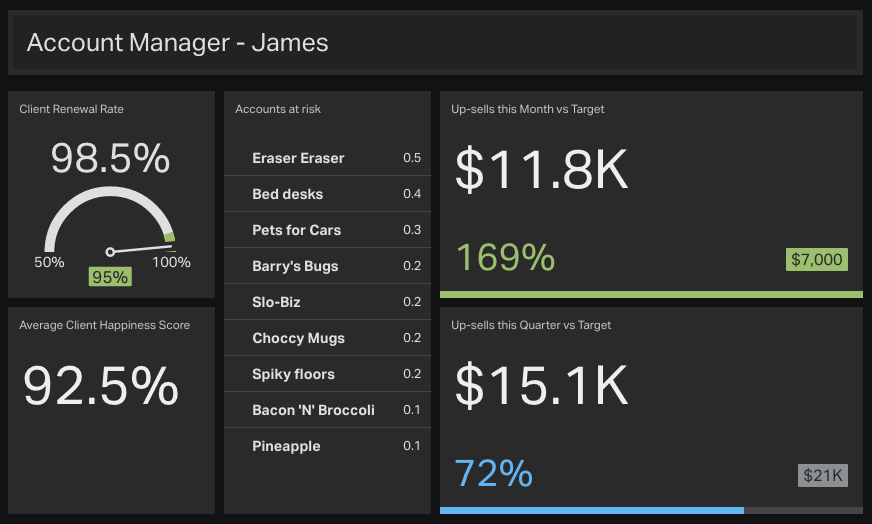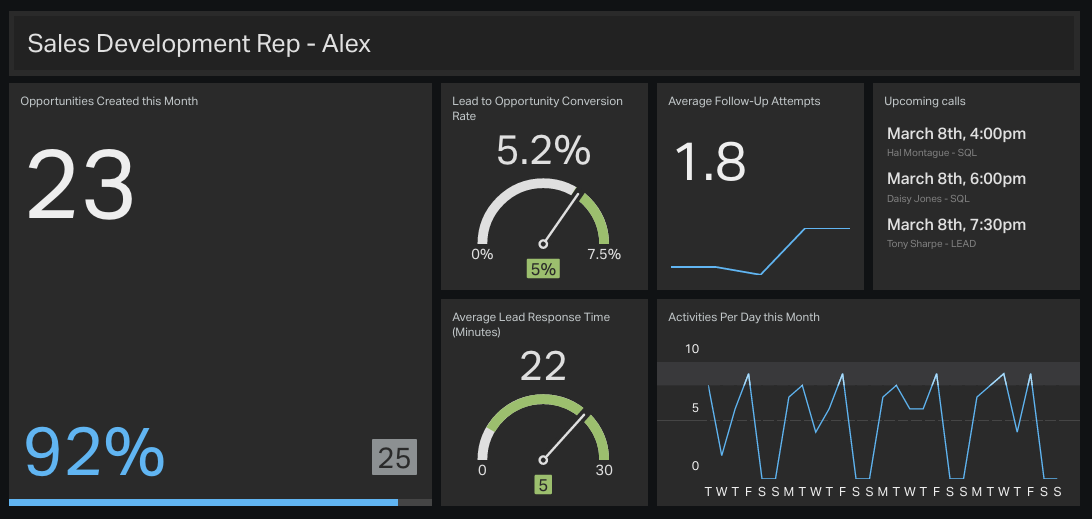Imagine you want to breed bunnies. (Why not? Bunnies are adorable!) If you don’t know how quickly they reproduce (i.e. what’s normal), you might be in for a surprise to discover that one bunny can easily multiply to over 50,000 bunnies in just three years.
Source: Pets4Homes
But what does breeding bunnies have to do with benchmarks? Expectations in context.
Benchmarks provide critical context for your business goals by establishing what’s normal in a given industry or market. Knowing it’s likely you’ll end up with thousands of bunnies (benchmarks of nature), you can better manage your breeding operation from the beginning.
What is benchmarking?
This concept of benchmarking is more formally described as “the process of comparing one's business processes and performance metrics to industry bests and best practices from other companies. Dimensions typically measured are quality, time, and cost.” (Wikipedia)
Basically, setting benchmarks (or benchmarking) determines what metrics your business must hit to succeed in your market. It’s like setting the rules for winning.
Why are benchmarks important?
Aside from the obvious result of determining a winner (top market share), benchmarks are critical for two reasons.
First, benchmarks show how you measure up to the competition. They let you know if you’re in the right range - if your KPIs are realistic. Are you good enough to compete? How do your conversion rates compare to other companies with a similar business model and/or product? Of course, the goal is to be better than average - better than ‘good enough,’ but ranking yourself against specific (and direct) competitors is a starting point.
“Unless you have a line in the sand, you don’t know if you’re crushing it or being crushed.” Alistair Croll and Benjamin Yoskovitz, Lean Analytics
Second, benchmarks help you understand what normal looks like for your business model and industry. This is a more general baseline that will fluctuate over time. As companies innovate and new solutions and processes are introduced, ‘normal’ will change drastically. If you want to stay relevant, you need to research and set benchmarks regularly.
How to set benchmarks
1. Determine what you’re going to measure.
To do this, you need to identify your key performance indicators (KPIs). What are the most important metrics for your business? If you’re in sales, you might want to check out these sales KPI examples. In their book Lean Analytics, Alistair Croll and Benjamin Yoskovitz recommend several different metrics you might want to track:
- Growth Rate
- Visitor Engagement (number of engaged visitors)
- Conversion Rate (percentage of visitors converting to trialists, or from trialists to customers)
- Pricing targets (pricing metrics)
- Customer acquisition cost (CAC)
- Virality (network effect)
- Mailing list effectiveness (open rate, click rate, number of additional subscribers)
- Uptime and Reliability
- Site engagement (time on site, downloads, etc.)
- Web performance (website load time, bounce rate)
2. Research your competitors and your industry.
As you research, look for the same metrics you’ve selected to track (in step one). If you don’t have direct competitors, you might need to dig a little deeper to find other companies targeting your same audience or companies with a similar business model in the same industry.
When looking for similar companies, it’s important to consider two main factors in addition to industry and business model:
- First, keep in mind the size / age of your company. For example, Amazon will have a much better conversion rate than an e-commerce startup because Amazon has a trusted brand and has spent years optimizing the experience.
- Second, average purchase value will significantly impact a realistic benchmark. Meaning, the conversion rate for a $10 product is likely to be much higher than the conversion rate for a $10,000 product because the former is a less considered purchase.
Once you identify the KPI you want to benchmark, it’s worth searching for benchmarks on Google. If you’re an e-commerce company and want the benchmark for “average basket conversion rate,” you’ll find a load of great resources by searching for “average e-commerce basket conversion rate benchmark” on Google.
If you don’t have any luck searching around on Google it’s worth asking the question on Quora to a group of people working in a similar industry to you. If you’re not familiar with Quora, it’s a question and answer community where people answer anything from what it means to be a social media marketer to what KPIs should be used among a sales team.
For marketers, you may want to reference the specific content marketing benchmarks from a recent study by Venngage of the top 115 marketing tech companies.
Also, if you’re a Google Analytics user, you’ll find helpful benchmarks in their reporting section. To access the Benchmarking reports:
- Sign in to your Analytics account
- Navigate to your view
- Select the Reporting tab
- Select Audience → Benchmarking
3. Draw a line in the sand (i.e. set your benchmarks).
After you’ve identified your key metrics and done your homework on industry norms and your competitors, you’re ready to set specific benchmarks for your business or team. It’s a good idea to set both internal and external benchmarks.
- External benchmarks are based on the industry norms your business must hit and surpass to become better than average. These benchmarks should be derived from your research in step two and likely include pricing targets, customer acquisition cost, virality, etc.
- Internal benchmarks are based on where your business is right now in comparison to last year or last month. For example, if your growth rate is substantially below industry norms, you might need to set interim growth benchmarks based on last year’s (or last month’s) growth to gradually ramp up to where you need to be.
4. Communicate targets based on researched benchmarks.
The effectiveness of benchmarking is directly proportional to how well you communicate your benchmarks. It’s critical to maintain transparency so everyone knows what they’re working towards and how they’re progressing. Conduct an all-hands or team meeting to communicate your benchmarks. If people know and understand the team/company goals, they’ll strive to achieve them. This means making benchmarks readily available to all employees at all times.
5. Measure and improve.
Easy to say, hard to do. Well, at least the improve part is challenging. One of the best ways to measure your progress against benchmarks is to set up a TV dashboard showing your KPIs compared to your goals (benchmarks). Below are two different example dashboards of how you might visualize KPIs and benchmarks. Notice the ‘target’ or goal for various metrics.


Improving your metrics is the tough part and far exceeds the scope of this post. But the super short version is to focus on changing one KPI at a time and keep your benchmarks visible and updated. This means keeping your dashboard relevant too. As businesses change and grow, so do industry norms. Regularly revisit your benchmarks and adapt them as necessary.
Taking action
Whether you’re breeding bunnies or running a SaaS company, setting benchmarks will provide essential context for growing your business. Block out enough time to research the norms in your industry. Then use that data to propel your own company by identifying specific, measurable, and realistic goals.
Got benchmarks but no dashboard?
Try Geckoboard for free and get your KPIs and benchmarks on a TV dashboard where it’s easy to measure and monitor your progress. Your team will thank you.

